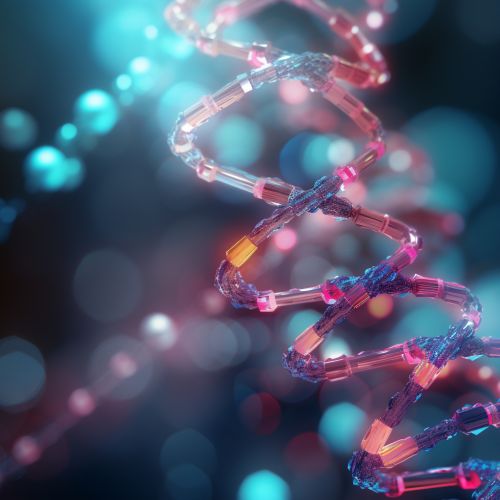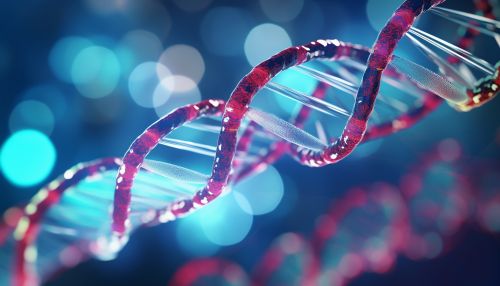Transcription (biology)
Overview
Transcription in biology refers to the first step of gene expression, where a particular segment of DNA is copied into RNA by the enzyme RNA polymerase. Both DNA and RNA are nucleic acids, which use base pairs of nucleotides as a complementary language that can be converted back and forth from DNA to RNA by the process of transcription.
Process
The process of transcription can be broken down into three stages: initiation, elongation, and termination.
Initiation
Initiation is the first stage of transcription. The RNA polymerase enzyme binds to the DNA molecule at the promoter region. The promoter contains specific DNA sequences that signal the start of the gene. The RNA polymerase then unwinds the DNA helix, exposing the DNA nucleotides on one of the two strands.
Elongation
In the elongation phase, the RNA polymerase moves along the DNA strand and synthesizes the RNA molecule. The RNA strand is extended as the RNA polymerase continues to move along the DNA strand, adding nucleotides to the 3' end of the RNA molecule. The DNA sequence is read from the 3' to the 5' end, which results in the RNA being synthesized in the 5' to 3' direction.
Termination
Termination occurs when the RNA polymerase reaches a terminator sequence in the DNA. The RNA polymerase detaches from the DNA, and the newly synthesized RNA molecule is released. The DNA molecule then resumes its normal configuration.
Types of RNA
There are three main types of RNA that are synthesized during transcription: messenger RNA (mRNA), ribosomal RNA (rRNA) and transfer RNA (tRNA).
Messenger RNA
Messenger RNA (mRNA) is the type of RNA that carries the genetic information from the DNA to the ribosome, where it specifies the sequence of amino acids in a protein.
Ribosomal RNA
Ribosomal RNA (rRNA) combines with proteins to form ribosomes, the structures that serve as the site of protein synthesis.
Transfer RNA
Transfer RNA (tRNA) carries amino acids to the ribosome for incorporation into a protein during the process of translation.
Regulation of Transcription
The rate of transcription is controlled by a variety of transcription factors. These proteins bind to specific DNA sequences and influence the ability of RNA polymerase to begin transcription. The regulation of transcription is a key mechanism by which cells control gene expression.
Role in Gene Expression
Transcription plays a crucial role in gene expression. It is the first step in the process by which the information in a gene is used to produce a functional product, typically a protein. The process of transcription is tightly regulated to ensure that the correct levels of proteins are produced in the right cells at the right time.
See Also


